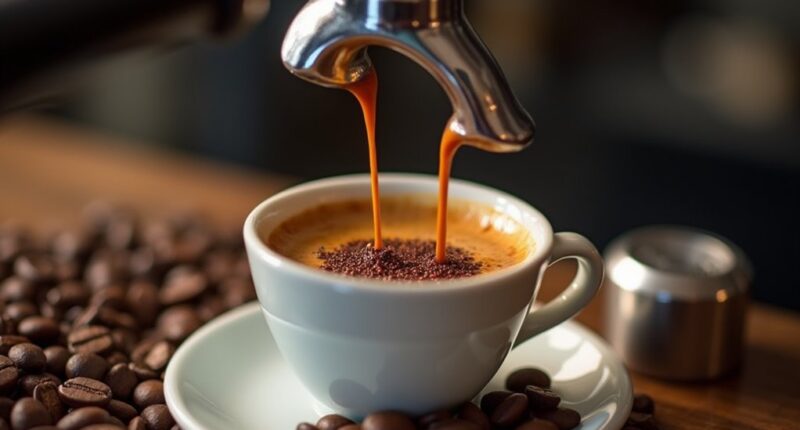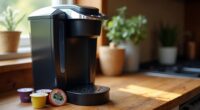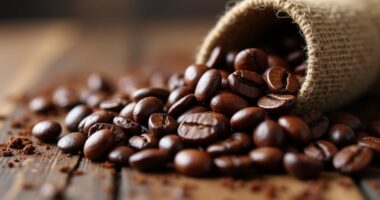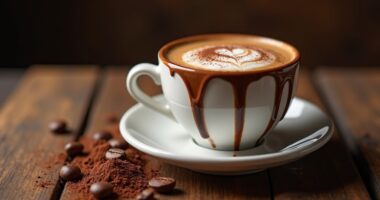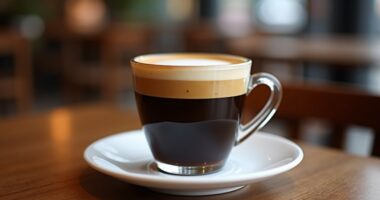Espresso’s strong kick comes from its brewing method—super fine coffee grounds are packed tightly, then hit with high pressure! This magic extracts around 63 mg of caffeine in just one ounce, giving you a serious boost compared to regular coffee. Plus, it’s not just about caffeine; the intense flavor comes from the grind, water quality, and even the brewing temp. Curious how all these factors make espresso such a bold experience? Keep listening, there’s more to uncover!
At a Glance
- Espresso has a high caffeine concentration, with a single shot containing about 63 mg of caffeine, contributing to its strength.
- The brew ratio of 1:2 maximizes flavor and strength, enhancing the overall intensity of the espresso.
- High pressure during brewing extracts concentrated flavors, resulting in a robust and bold shot.
- A super fine grind size and ideal brewing temperature prevent bitterness and improve extraction, leading to a richer taste.
- Espresso’s small serving size delivers a concentrated energy boost, unlike larger coffee drinks that dilute the caffeine content.
Understanding Caffeine Content in Espresso
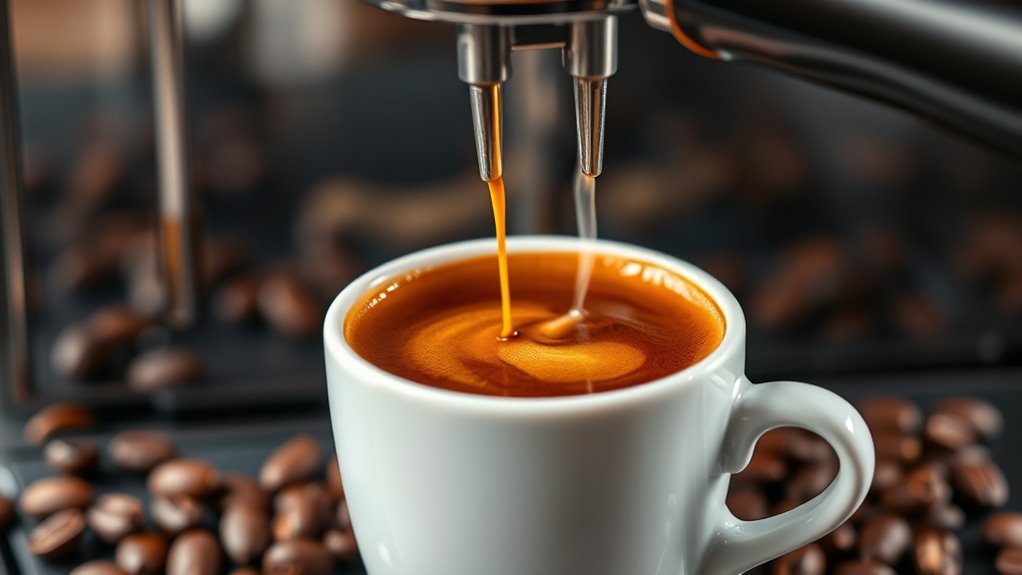
Have you ever wondered why espresso feels like a jolt of energy in a tiny cup?
Well, it’s all about caffeine concentration! A single shot packs about 63 mg, while a double shot ramps it up to around 126 to 150 mg.
Espresso delivers a powerful caffeine boost—63 mg in a single shot and up to 150 mg in a double!
That’s quite a punch for such a small amount!
But don’t forget about caffeine variability—different beans and brewing methods can change things up.
In addition, the quality of the water used in brewing can significantly affect the extraction process, influencing the overall flavor and strength of the espresso.
So, while espresso’s strong reputation is well-deserved, remember that every cup is a little unique.
Next time you sip, just know you’re getting a concentrated burst of energy, perfect for those busy days with friends!
Factors Influencing Espresso Strength
When you plunge into the world of espresso, you’ll quickly discover that its strength isn’t just a happy accident—it’s all about the details!
Here are three key factors that influence espresso strength:
- Grind Consistency: A fine, even grind maximizes flavor extraction, but too fine can lead to bitterness.
- Brew Ratio: The classic 1:2 ratio of coffee to water really packs a punch, so tweak it for your perfect shot!
- Pressure: High pressure guarantees a concentrated brew, so don’t let your machine slack!
These elements work together to create that rich, intense espresso you love. Additionally, ensuring your espresso is brewed at the perfect temperature enhances flavor and aroma, making each sip even more enjoyable.
Enjoy experimenting!
Espresso vs. Other Coffee Drinks
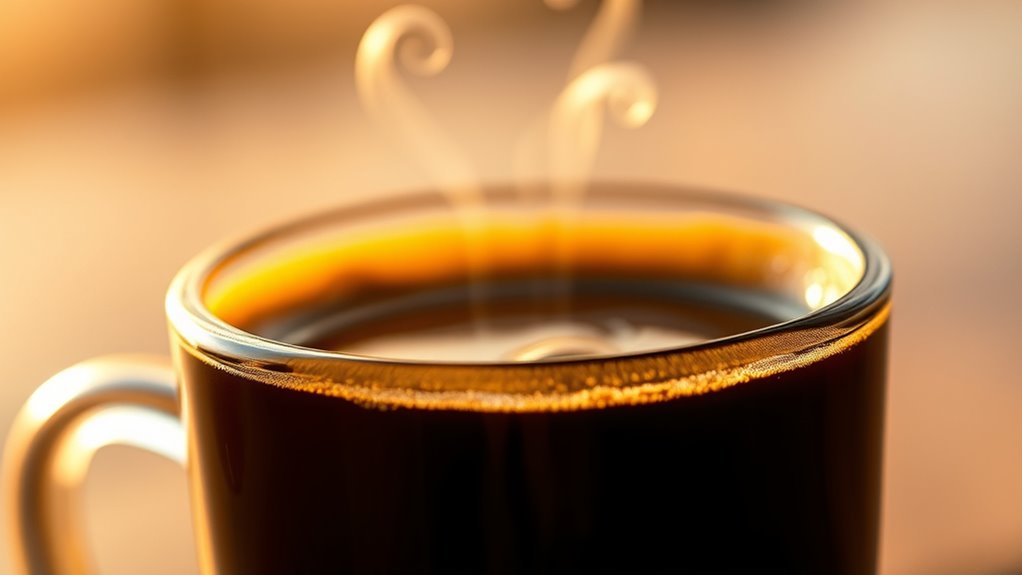
Espresso isn’t just a strong cup of coffee; it’s a whole vibe! When you immerse yourself in espresso preparation, you’re stepping into a world of rich flavor and culture.
Unlike brewed coffee, which is milder and served in larger mugs, espresso packs a punch in a tiny 1-ounce shot.
Sure, you might love your cappuccino or latte, but those drinks can’t match the concentrated energy and bold taste of espresso.
Plus, sipping espresso is like joining a social ritual, bonding over the shared love for that intense little cup. The DeLonghi espresso machine can help you achieve the perfect shot at home, enhancing your espresso experience even further.
Brewing Techniques and Equipment
If you’re ready to plunge into the world of espresso brewing, you’re in for a treat!
Here’s what you need to know about the essential brewing techniques and equipment:
- Grind Size: Use a super fine grind, almost powder-like, to boost extraction speed and flavor.
- Brew Temperature: Aim for 90-96°C (194-205°F) to avoid bitterness or weak flavors.
- Tamping: Compress your coffee grounds with about 30 pounds of pressure for even extraction.
With the right extraction methods and tools, you’ll brew a rich, flavorful shot that’ll impress your friends and keep you caffeinated! Additionally, using the right coffee grinder for French press can enhance your espresso experience by providing the ideal grind consistency for extraction.
Who’s ready to pull some shots?
Nutritional and Chemical Composition
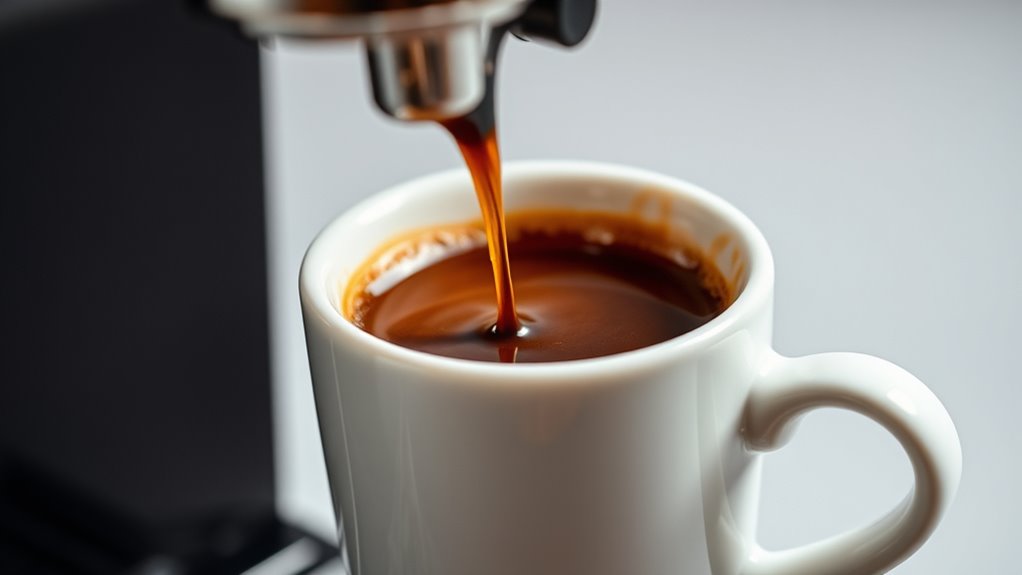
After you’ve got your espresso brewing techniques down, it’s time to get curious about what’s actually in that tiny, powerful shot. Espresso packs a punch with its nutrient density and impressive antioxidant levels. Check out this breakdown:
| Component | Amount per Shot | Benefits |
|---|---|---|
| Caffeine | 63-64 mg | Boosts energy and alertness |
| Calories | < 1 cal | Guilt-free indulgence |
| Antioxidants | High | Supports health and wellness |
| Vitamins & Minerals | Small amounts | B vitamins and potassium boost |
Espresso is often made from the finest black coffee brands, which contributes to its rich flavor and strong profile.
Health and Consumption Considerations
When you take a sip of that rich, dark espresso, it’s not just a delightful treat; it’s packed with some serious health considerations! Here’s what you need to know:
- Moderation is key: Aim for 3–5 cups a day for health benefits like a lower risk of heart disease.
- Timing matters: Morning sips are linked to better health outcomes.
- Know your limits: Keep consumption under 400 mg daily to avoid jitters and anxiety.
- Consider brewing methods: Different brewing methods can impact acidity levels in coffee, influencing how your body reacts to espresso.
The Science Behind Espresso’s Bold Flavor
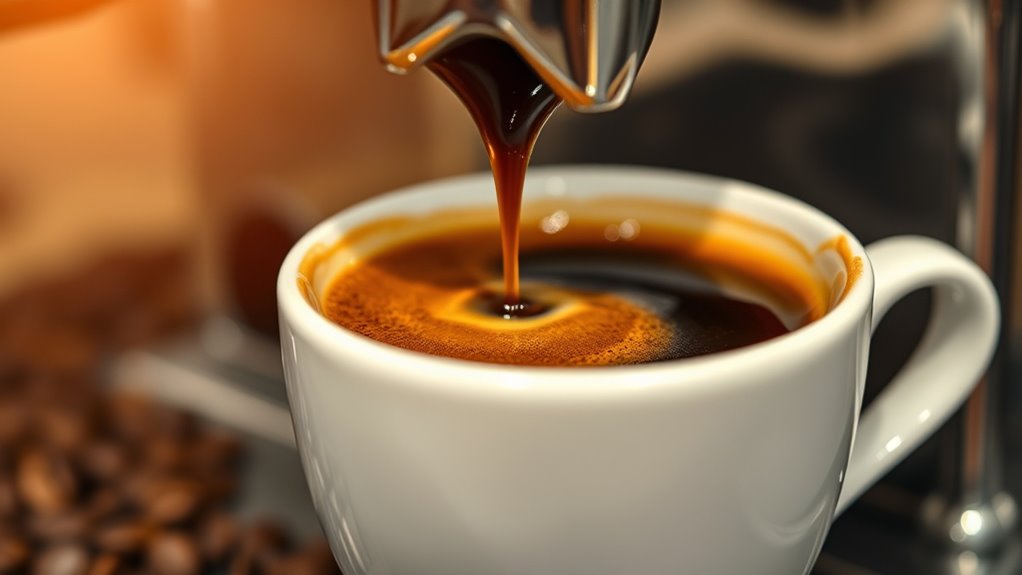
Espresso isn’t just a quick caffeine fix; it’s a science experiment in a tiny cup!
You see, the magic happens through extraction dynamics, where hot water under pressure pulls out flavor compounds from the coffee grounds. Initially, you get those bright, tangy notes, but as extraction continues, bold flavors like caffeine kick in. The process can be finely tuned with a quality espresso machine, allowing for optimal pressure and temperature control.
If you over-extract, though, watch out for that bitter punch! The grind size matters too—finer grounds boost flavor intensity, while coarser ones might leave you with a weak brew.
